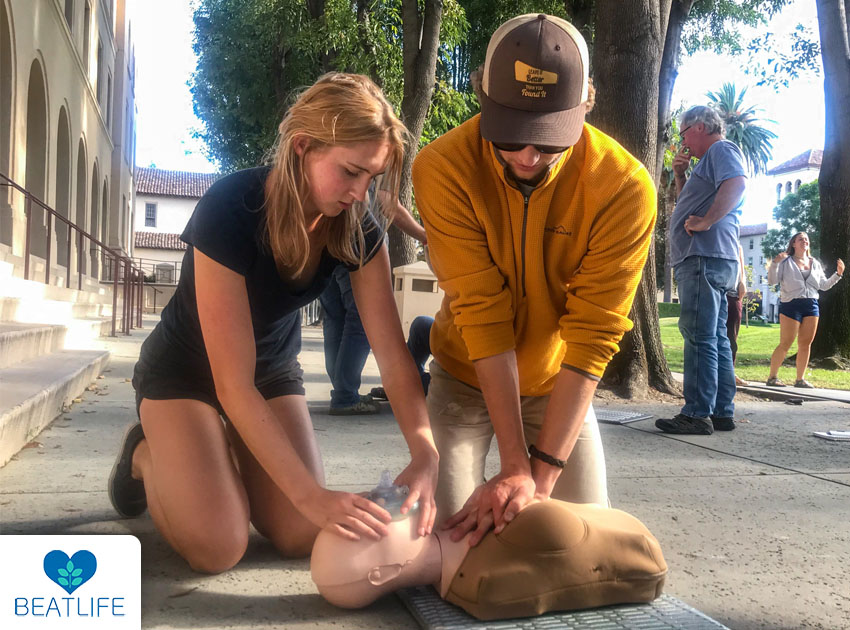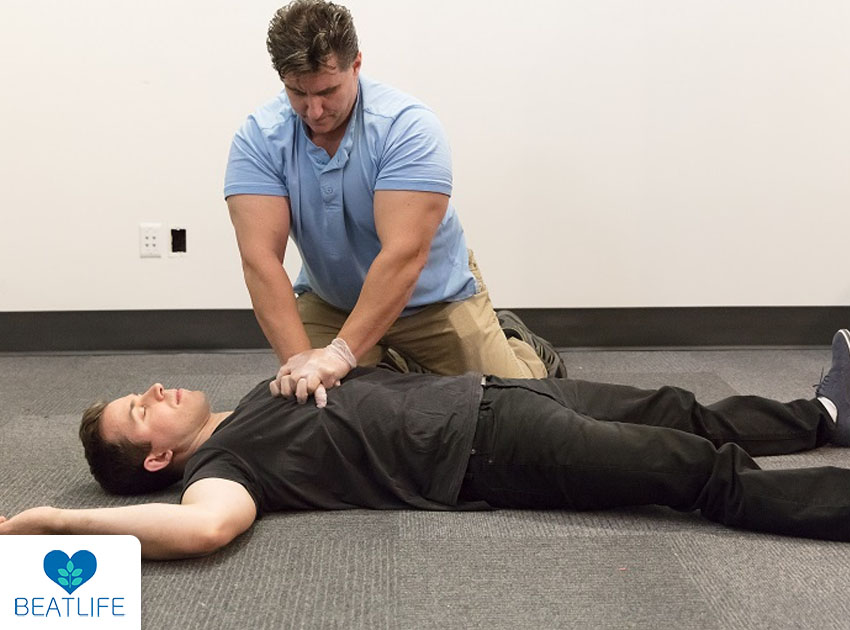In an unexpected cardiac emergency, cardiopulmonary resuscitation, or CPR, is an essential ability that can mean the difference between life and death. Imagine if someone unexpectedly passes out while you’re at a family reunion, a community function, or even simply going about your daily business. Knowing the preferred method of CPR becomes crucial at that momentous moment. This basic article covers the idea of CPR as well as its multiple techniques, emphasizing the particular technique that professionals advise as the preferred method of CPR depending on the circumstances.
Fundamentally, CPR is a life-saving method used to keep oxygen and blood flowing to an individual’s important organs in the event that their breathing and heart have stopped. In cardiac crises, this technique can increase the patient’s odds of survival by two or three times. Various CPR techniques can be used, according to the situation, the victim’s age, and the responder’s level of expertise. These techniques range from hands-only CPR, which concentrates just on compressions, to standard CPR, which includes rescue breaths and chest compressions. To provide the greatest results during crises, a few key elements must be considered while choosing the preferred method of CPR
By the time you finish reading this guide, you’ll know why CPR is so important and how to give emergency care priority when someone’s life is at risk. So, let’s proceed on this adventure to learn the recommended technique for performing CPR and how it may be your most valuable weapon for saving lives when every second matters.

Contents
What is CPR?
Cardiopulmonary resuscitation (CPR) is a vital component of contemporary medical treatments. It is a procedure used in emergency care whose primary goal is to save life when someone has abrupt cardiac arrest or respiratory failure. Cardiopulmonary resuscitation (CPR) is a crucial and time-sensitive therapy that aims to preserve important respiratory and circulatory functions, effectively substituting the failing roles of the heart and lungs. Essentially, CPR uses external mechanical forces—mainly, regular chest compressions—to help oxygenated blood circulate, which meets the critically important and urgent demand for oxygenation of cells. However, the intricacy of this intervention goes beyond its mechanical workings, involving an awareness of its significant social ramifications as well as a comprehension of the complicated physiological reaction it produces.
The CPR’s Physiological Basis: Fundamentally, CPR is based on the idea that, in the case of cardiac failure, preserving cellular integrity and preventing irreversible damage depend on the tissues, especially the brain, receiving an appropriate amount of oxygen. This intervention emphasizes the significance of prompt and well-coordinated execution by coordinating a number of interrelated bodily reactions. The purpose of performing CPR quickly is to treat the sudden stop of the heart’s pumping motion, which is usually caused by cardiac arrhythmias or ventricular fibrillation. Aortic diastolic pressure is increased and coronary perfusion pressure is restored when the process starts a cycle of chest compressions that produce compression pressures.
Simultaneously, these compressions lower intrathoracic pressure, which makes it easier for blood to passively return to the right side of the heart. This process then increases venous return, which restores the cardiac preload. The combination of these physiological reactions highlights the vital role that CPR plays as a basic and life-saving intervention in the fields of emergency medicine and critical care, both locally inside the heart and systemically.

What is the different method of CPR?
CPR can be given in a variety of ways, depending on the victim’s age, the responder’s experience, and the availability of CPR tools such as automated external defibrillators (AEDs). Here are a few of the primary CPR methods:
1 Conventional CPR (For Adults and Children):
In order to restore circulation and oxygenation in unconscious people, conventional CPR for adults and children consists of 30 chest compressions plus 2 rescue breaths. It places special emphasis on performing chest compressions of superior quality and using efficient breathing. This method is a basic life-saving strategy that may be modified according to the victim’s age and the responder’s level of training. Responders can improve the quality of CPR delivery by using CPR feedback tools like CPRmeter like the one we produce in the BEATLIFE team to help them make sure their compressions and ventilations are up to standard.
2 CPR for Infants (Younger than 1 Year):
Because of their specific physiology and vulnerability, infants—generally defined as children under one year old—require a specialist approach when performing CPR. preferred method of CPR aims to guarantee the safety and effectiveness of CPR on newborns, by using specialized procedures and exercise gentleness. Using two fingers, often the index and middle fingers, the responder must provide gentle, controlled chest compressions using this technique. The depth of these compressions should be around one-third the depth of the baby’s chest or 1.5 inches. Furthermore, it’s important to give the baby rescue breaths by softly puffing into their mouth and nose and making sure that each breath causes their chest to slightly rise.
3 CPR for Healthcare Providers:
CPR for healthcare providers is specifically designed for medical professionals. It involves more accurate and efficient techniques as well as the use of specialized equipment such as AEDs, bag-valve masks, and endotracheal intubation. Healthcare providers are trained to recognize a variety of life-threatening conditions and arrhythmias, which allows them to provide specialized care for better patient outcomes during cardiac emergencies.
4 CPR with AED:
The life-saving technique known as “CPR with AED” treats sudden cardiac arrest by combining cardiopulmonary resuscitation (CPR) with the use of an automated external defibrillator (AED). it is one of the preferred methods of CPR since it involves providing breathing assistance and chest compressions while the AED monitors the heartbeat and, if required, shocks the patient with regulated electricity. Using this strategy greatly improves survival rates in cardiac crises.
5 Continuous Chest Compressions (CCC):
CPR for individuals experiencing cardiac arrest is a simplified technique known as hands-only CPR or continuous chest compressions (CCC). It places emphasis on continuous chest compressions at a pace of 100–120 beats per minute, obviating the need for conventional rescue breaths and preserving vital blood flow. CCC prioritizes high-quality chest compressions, increasing survival odds in sudden cardiac arrest and making it excellent for inexperienced or reluctant rescuers.
6 Hands-Only CPR:
Manual Work CPR is a simplified procedure that entails performing chest compressions continuously without using rescue breaths. For untrained viewers who see an adult or teenager experiencing a sudden cardiac arrest, it is advised. The goal of this strategy is to maintain oxygen-rich blood circulation until medical assistance comes.

What is the preferred method of CPR?
The scenario and the responder’s level of expertise determine the methods preferred method of CPR. “Hands-Only CPR” is sometimes suggested as the best strategy for inexperienced bystanders, particularly in adult cases of sudden cardiac arrest. This involves doing continuous chest compressions without the use of rescue breaths. It has been demonstrated that using this simple to memorize and apply technique increases the chances of adult victims surviving.

